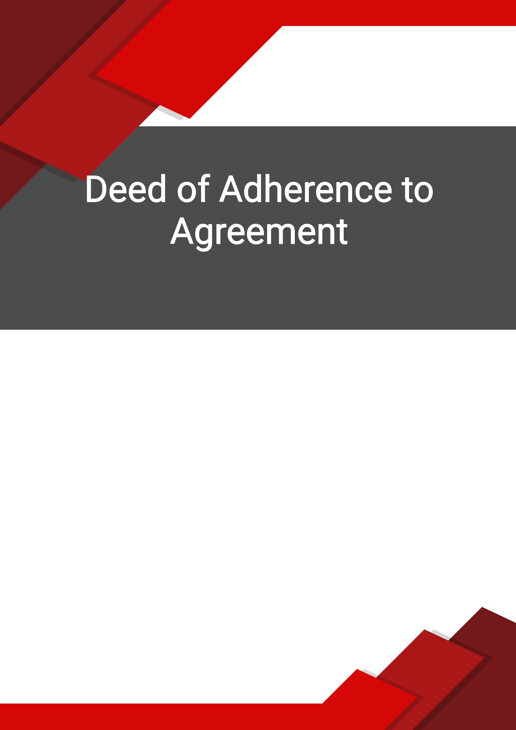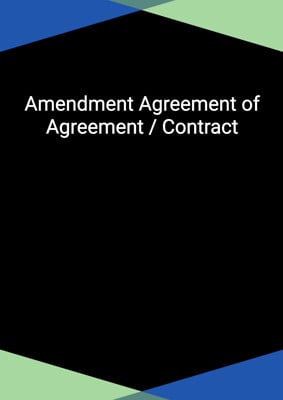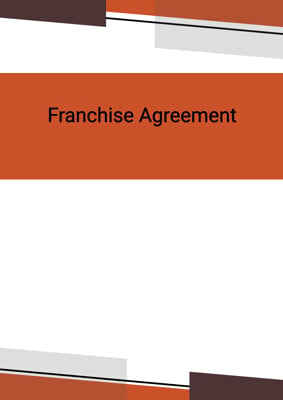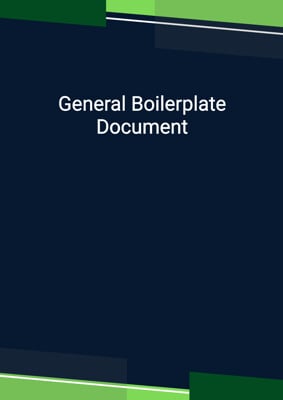How to Tailor the Document for Your Need?
01
Create Document
Fill in the details of the parties. You can click the "Fill with Member’s Information" button to complete it with information saved to your account.
02
Fill Information
Please fill in any additional information by following the step-by-step guide on the left hand side of the preview document and click the "Next" button.
03
Get Document
When you are done, click the "Get Document" button and you can download the document in Word or PDF format.
04
Review Document
The document should be signed by the authorised signatory (or directors of a company) and witnessed to complete the formality.
Document Preview
Document Description
The Deed of Adherence to Agreement is a legal document that allows a new party, referred to as the 'joiner', to become a party to an existing agreement. This document is entered into on the current date by the joiner, whose principal place of business is at the joiner's address provided. The purpose of this deed is to amend the existing agreement so that the joiner assumes the rights and obligations under the agreement.
The document begins with an interpretation section, stating that words and expressions defined in the agreement have the same meanings when used in this deed, unless the context requires otherwise. This ensures consistency and clarity in the interpretation of the document.
The adherence section is the core of the document. It states that the joiner covenants and undertakes with each of the other parties listed in the schedule to be bound by and comply with the agreement. The joiner also assumes the benefits of the agreement as if they had executed the agreement and were named as an original party. This section ensures that the joiner fully participates in the rights and obligations of the agreement.
The notices section specifies the joiner's address for receiving notices related to the agreement. It includes the joiner's name, address, email, and a contact person. This information is crucial for effective communication between the parties.
The governing law and dispute resolution section states that this deed shall be governed by and construed in accordance with the laws of the agreement. It also specifies that the dispute resolution provisions of the agreement apply to this deed. This ensures that any disputes arising from the adherence to the agreement are resolved according to the agreed-upon procedures.
The third-party rights section clarifies that a person who is not a party to this deed has no rights to enforce any term of this deed. Additionally, the parties do not require the consent of any person who is not a party to rescind or vary a provision of this deed or any right created under it. This section protects the rights and interests of the parties involved.
In conclusion, this Deed of Adherence to Agreement is a crucial document that allows a new party to join an existing agreement and assume the rights and obligations under it. It provides clear instructions and guidelines for the joiner, ensuring a smooth transition and effective participation in the agreement.
How to use this document?
To use the Deed of Adherence to Agreement effectively, follow these steps:
1. Interpretation: Familiarize yourself with the definitions and meanings of words and expressions used in the agreement. Ensure that you understand the context in which they are used in this deed.
2. Adherence: As the joiner, covenant and undertake with each of the other parties listed in the schedule to be bound by and comply with the agreement. Assume the benefits of the agreement as if you had executed the agreement and were named as an original party. This step ensures that you fully participate in the rights and obligations of the agreement.
3. Notices: Provide your address for receiving notices related to the agreement. Include your name, address, email, and a contact person. This step ensures effective communication between the parties.
4. Governing Law and Dispute Resolution: Understand that this deed is governed by and construed in accordance with the laws of the agreement. The dispute resolution provisions of the agreement also apply to this deed. Familiarize yourself with the agreed-upon procedures for resolving disputes. This step ensures that any disputes arising from the adherence to the agreement are handled appropriately.
5. Third-Party Rights: Note that a person who is not a party to this deed has no rights to enforce any term of this deed. Additionally, the parties do not require the consent of any person who is not a party to rescind or vary a provision of this deed or any right created under it. This step protects the rights and interests of the parties involved.
By following these steps, you can effectively use the Deed of Adherence to Agreement and ensure a smooth transition as a new party to the existing agreement.
Not the right document?
Don’t worry, we have thousands of documents for you to choose from:




































